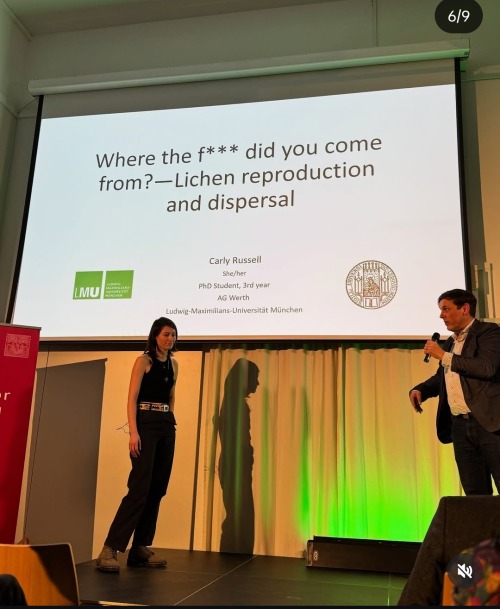Lifereborn - The Life Weavers Retreat

More Posts from Lifereborn and Others
Youre telling me the bartender is a mouse? Shes a girl whos a mouse? *chuckles warmly* That's pretty out there. I'm too old for that kind of thing, but you have fun with that. *to myself after you walk away, but with no trace of spite in my voice* A bartender who's a mouse... what will they think of next?

Plant Immune System Part 3
The plant immune system is the topic of my PhD thesis, which I'm currently writing following several years of lab-based research as a PhD student at Imperial College London under the supervision of Professor Colin Turnbull.
Here's an introduction to my research, which focused on how certain plants defend themselves against aphids.
Aphids are an important insect pest that threaten agriculture worldwide. As we learned in the previous post, plant resistance (R) genes control resistance to specific pests and pathogens through interaction with effectors from the invaders. Since examples of R gene-dependent aphid resistance have been documented in different plant species, aphid-specific R genes may enable the development of resistant crops.
In the model plant Medicago truncatula, there are some varieties that are resistant to aphids and other varieties that are susceptible to Pea Aphids (Acyrthosiphon pisum). Whether the plant is resistant also depends on the variety of aphid. In my project, the A17 plant is resistant to PS01 aphids but not to N116 aphids, while the DZA plant is susceptible to both aphid varieties.
What is the key difference in the resistant versus susceptible plants? Resistant A17 plants have a portion of their genome “Resistance to Acyrthosiphon pisum 1” (RAP1) which determines resistance to PS01 aphids, but the genes controlling the defence response and physiological defence mechanisms remain unknown. Two candidate R genes located in RAP1, designated “RAP1A” and “RAP1B”, may control resistance.
My main objective in my PhD project has been to determine whether RAP1A and RAP1B control aphid resistance, and to investigate the RAP1-mediated defence response. I look forward to sharing the findings in publications and in talks next year!
Image credit: Original diagram by Katia Hougaard with images from the Turnbull Lab.
#katia_plantscientist#science#biology#research#plants#botany#plantbiology#phdproject#plantbiology#plantscience#sciencecommunication#diagrams#phd#imperialcollegelondon#phdthesis#medicago#aphid#plantimmunesystem#pestsandpathogens#plantpathology#womeninscience#plantbiologist
Lacking chlorophyll Dodder (genus Cuscuta) has evolved a parasitic relationship with it’s host plants for water and nutrients. It invades its hosts using specialized structures called haustoria, which penetrate the host plant's vascular system to extract resources - sounds like a 1950s horror thriller. Not welcome on farms as it reduces crop yields.
Y'all, I just won €400 in a Science Slam competition that is going toward my research, and I want to thank all of you for being my audience for the last few years. Without this space where I can practice my science communication and my bad lichen jokes, I wouldn't have done nearly as well. Much love to you!

See me here looking extremely uncomfortable to be perceived by others


plants love being polyploid its one of their favorite things to be

I'd love to know the story behind whoever left their wedding album in the spring cleaning pile next to my lab.

-
 sireniana liked this · 1 week ago
sireniana liked this · 1 week ago -
 cobwebbedgoosedown liked this · 1 week ago
cobwebbedgoosedown liked this · 1 week ago -
 elliottnotyet liked this · 2 weeks ago
elliottnotyet liked this · 2 weeks ago -
 ratpopulation reblogged this · 2 weeks ago
ratpopulation reblogged this · 2 weeks ago -
 dreamthieflynch reblogged this · 2 weeks ago
dreamthieflynch reblogged this · 2 weeks ago -
 dreamthieflynch liked this · 2 weeks ago
dreamthieflynch liked this · 2 weeks ago -
 drunken-two-am-lawnmowing reblogged this · 2 weeks ago
drunken-two-am-lawnmowing reblogged this · 2 weeks ago -
 jasonthegr8 reblogged this · 2 weeks ago
jasonthegr8 reblogged this · 2 weeks ago -
 jovialdelusionbouquet liked this · 2 weeks ago
jovialdelusionbouquet liked this · 2 weeks ago -
 andromeda-apple reblogged this · 2 weeks ago
andromeda-apple reblogged this · 2 weeks ago -
 the-macintosh-system reblogged this · 2 weeks ago
the-macintosh-system reblogged this · 2 weeks ago -
 the-macintosh-system liked this · 2 weeks ago
the-macintosh-system liked this · 2 weeks ago -
 conflagrationamalgamation liked this · 2 weeks ago
conflagrationamalgamation liked this · 2 weeks ago -
 four-leafed-queer-gal reblogged this · 2 weeks ago
four-leafed-queer-gal reblogged this · 2 weeks ago -
 tragicallybanana liked this · 2 weeks ago
tragicallybanana liked this · 2 weeks ago -
 drydrycactus liked this · 2 weeks ago
drydrycactus liked this · 2 weeks ago -
 transfem-karkat-vantas liked this · 2 weeks ago
transfem-karkat-vantas liked this · 2 weeks ago -
 marinipanini reblogged this · 2 weeks ago
marinipanini reblogged this · 2 weeks ago -
 irishfry reblogged this · 2 weeks ago
irishfry reblogged this · 2 weeks ago -
 irishfry liked this · 2 weeks ago
irishfry liked this · 2 weeks ago -
 crusaderiguess liked this · 2 weeks ago
crusaderiguess liked this · 2 weeks ago -
 someones-here-for-sure liked this · 2 weeks ago
someones-here-for-sure liked this · 2 weeks ago -
 attentiondeficitastartes reblogged this · 2 weeks ago
attentiondeficitastartes reblogged this · 2 weeks ago -
 attentiondeficitastartes liked this · 2 weeks ago
attentiondeficitastartes liked this · 2 weeks ago -
 onetimemacareblogs reblogged this · 2 weeks ago
onetimemacareblogs reblogged this · 2 weeks ago -
 im-an-anthusiast reblogged this · 2 weeks ago
im-an-anthusiast reblogged this · 2 weeks ago -
 im-an-anthusiast liked this · 2 weeks ago
im-an-anthusiast liked this · 2 weeks ago -
 rotten1artist liked this · 2 weeks ago
rotten1artist liked this · 2 weeks ago -
 paradoxmimzy reblogged this · 2 weeks ago
paradoxmimzy reblogged this · 2 weeks ago -
 llaparzu liked this · 2 weeks ago
llaparzu liked this · 2 weeks ago -
 jaybybyby reblogged this · 2 weeks ago
jaybybyby reblogged this · 2 weeks ago -
 dontmineit reblogged this · 2 weeks ago
dontmineit reblogged this · 2 weeks ago -
 hyptanyl liked this · 2 weeks ago
hyptanyl liked this · 2 weeks ago -
 infinite-frogs liked this · 2 weeks ago
infinite-frogs liked this · 2 weeks ago -
 masterofgravity reblogged this · 2 weeks ago
masterofgravity reblogged this · 2 weeks ago -
 willowplantcat reblogged this · 2 weeks ago
willowplantcat reblogged this · 2 weeks ago -
 willowplantcat liked this · 2 weeks ago
willowplantcat liked this · 2 weeks ago -
 avita-anarchy reblogged this · 2 weeks ago
avita-anarchy reblogged this · 2 weeks ago -
 avita-anarchy liked this · 2 weeks ago
avita-anarchy liked this · 2 weeks ago -
 ouppio liked this · 2 weeks ago
ouppio liked this · 2 weeks ago -
 soured-aspartame reblogged this · 2 weeks ago
soured-aspartame reblogged this · 2 weeks ago -
 keytobernadette liked this · 2 weeks ago
keytobernadette liked this · 2 weeks ago -
 book-grim reblogged this · 2 weeks ago
book-grim reblogged this · 2 weeks ago -
 book-grim liked this · 2 weeks ago
book-grim liked this · 2 weeks ago -
 enchantingcheesecakepersona liked this · 2 weeks ago
enchantingcheesecakepersona liked this · 2 weeks ago -
 handkinkbis reblogged this · 2 weeks ago
handkinkbis reblogged this · 2 weeks ago -
 handkinkbis liked this · 2 weeks ago
handkinkbis liked this · 2 weeks ago -
 schtschhhh liked this · 2 weeks ago
schtschhhh liked this · 2 weeks ago -
 itsscaboose liked this · 2 weeks ago
itsscaboose liked this · 2 weeks ago

Scientist, scholar, hapless train wreck all wrapped into one neurotic package.
71 posts
